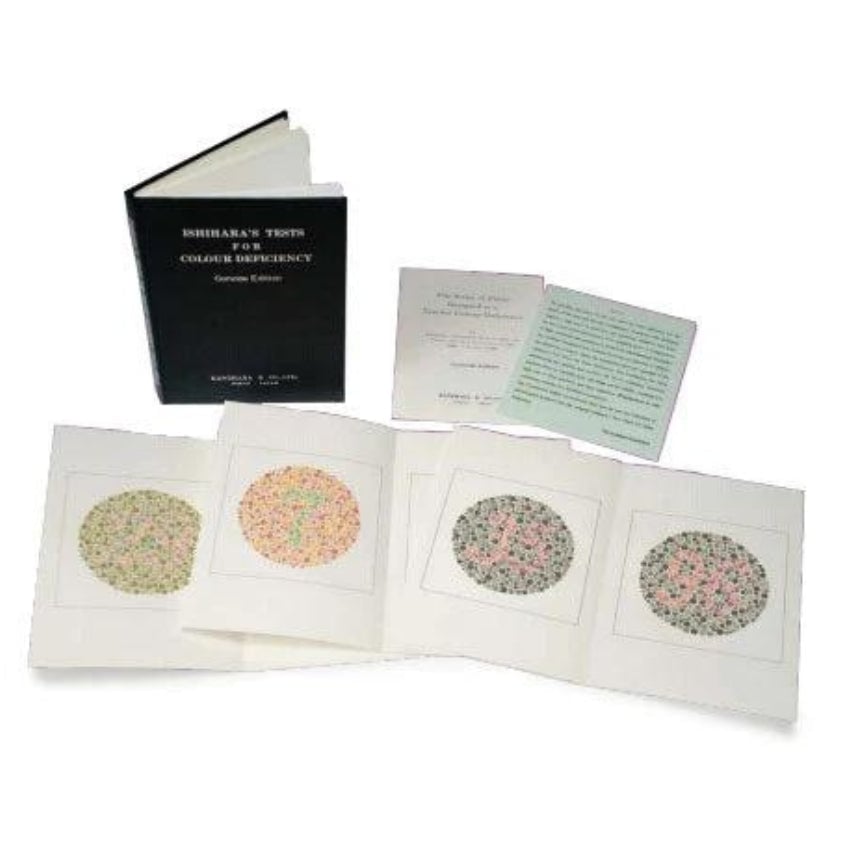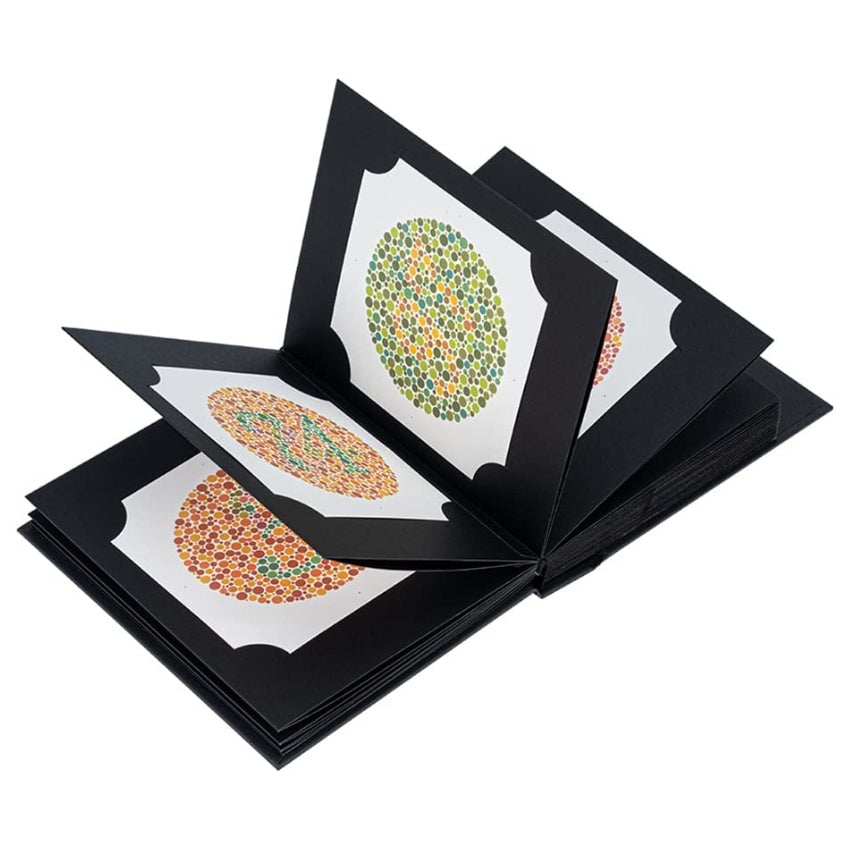The Ishihara color test is a diagnostic tool for determining colorblindness, named after its creator, Dr. Shinobu Ishihara. Developed in 1917 at the University of Tokyo, it takes advantage of the increased contrast between blue and yellow when compared to red and green. The test involves a set of plates with randomized, differently colored dots of various sizes, each concealing a number only visible to those without color deficiency.
Features
- Accepted by leading authorities as a simple and accurate method for discovering congenital color blindness and red-green blindness, each in two forms, complete and incomplete
- Includes four special plates for tests to determine the kind and degree of defect in color vision
- Makes use of the peculiarity that in red-green blindness, blue and yellow appear remarkably bright compared with red and green
- Color plates encased in specially designed album-type books for ease of handling
- Detailed instructions included











